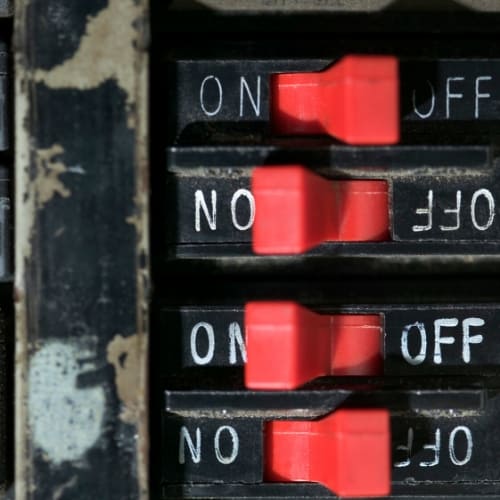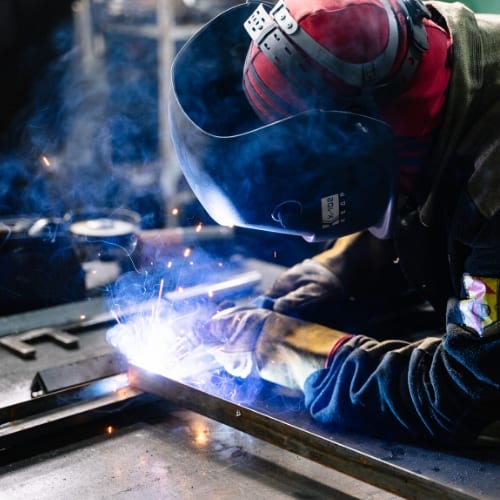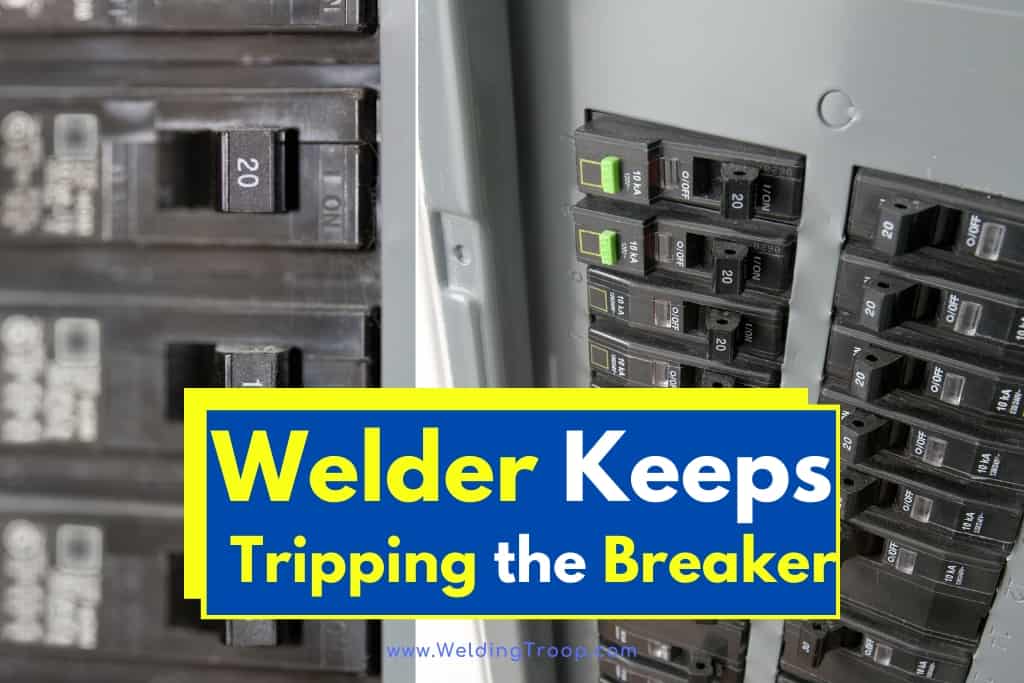It’s no secret; welding tools use a lot of power. It should come as no great surprise that a welder can overload a circuit breaker and cause it to trip. This may be fine as an occasional occurrence when you’re trying to use too much on the same circuit at one time. However, if it’s a repeated issue, it can become a real issue. If your welder is continually causing your breaker to trip, it becomes pretty useless. So, what can you do about it?
What should you do if your welder keeps tripping the breaker? The simple answer is that if the welder is causing the breaker to trip, then it’s trying to pull more power than the breaker can supply. This may be because the breaker doesn’t support a high enough amperage for what the welder is pulling, or it could be that there’s a defect in either the breaker or the welder.
There are a number of problems that could cause the breaker to trip every time you try to use your welder. The key is to narrow down which issue is causing the problem for you. Then, it should be fairly simple to fix your setup so you can weld without issue.
Table of Contents
What Causes the Breaker to Trip While Welding?
A circuit breaker is designed to prevent damage to your home. When the amperage of a circuit is increased, the electrical resistance in the circuit is increased as well.
If the amperage increases too high, it can cause the resistance in the wires to increase to the point where they get hot and can become a fire hazard. To prevent accident a circuit breaker interrupts the flow of electricity before the amperage can get too high.
Most conventional circuit breakers do this by placing an electromagnet integrated into the circuit near a switch. When the amperage increases to unsafe levels, the electromagnet will pull with greater force, moving the switch and opening the circuit. This breaks the flow of electricity and prevents accident.

Welders are powerful tools which use a great deal of electricity. This requires a circuit which is designed to allow a high amperage without causing damage or tripping the circuit breaker. If the welder pulls more amps from the circuit than the breaker will allow, then the breaker will trip.
That being said, there are a few questions to ask yourself to narrow down what is causing the welder to repeatedly trip the circuit breaker. Let’s check them each.
Related reading: How Many Amps Do I Really Need for a MIG Welder?
Does the Breaker Support High Enough Amperage?
Have we mentioned that welders use a lot of electricity? Turns out, it takes a lot of juice to melt solid steel into a puddle. The most likely cause of your problem is the breaker itself. There may not even be anything wrong with it.
The breakers installed standard in most homes are often not large enough to support even a typical welder. Even a large 240V outlet used to power a refrigerator or dryer may be too small to run a welder for an extended period of time.
You can usually find the amperage for your circuit breaker marked on the handle. The manual and settings of your welder should allow you to determine how many amps you’re pulling. If the amperage of the welder exceeds the amperage supported by the breaker, then no amount of fiddling is going to fix it. Contact an electrician to see if a dedicated 50 Amp breaker can be added or if your existing system can be upgraded.
Are You Using the Correct Settings?
The way you’ve got the settings turned on your welder will affect its output. If you’ve got a machine that’s been working fine and now suddenly isn’t, make sure that you haven’t changed any settings. Anything you changed could have increased the output of the welder and therefore increased the strain on the circuit.
Dual voltage welders are of particular concern. Changing the voltage of the welder will necessarily affect the amperage. Try running on the lower option, you won’t necessarily be running on full power, but it’s better than not running at all.
Is the Breaker/Wiring Functioning Properly?
It’s possible that even if you’ve got everything set properly and your breaker is rated for an amperage high enough to support your welder, you’ll still run into problems. If you’ve verified that everything should be working, and it isn’t, then something may be in disrepair. Older wiring with aged breakers can decay over time, become weak, and trip more easily than they’re supposed to.
If you’re operating with an older electrical system, it may be worthwhile to make sure that the wiring and breaker are still functioning as intended. Before you call the electrician, you can check for any obvious loose connections and double-check to make sure that absolutely nothing else is running on the circuit. If anything else is pulling power, that’s going to eat into your amperage limit. It may not just be things that are plugged in; lights, fans, and heating elements could all be connected to the circuit.
Once you’ve checked for easy to spot problems, have an electrician take a look at your system. It may be possible to replace the breaker and fix the problem.
Is the Welder Functioning Properly?
Does your welder trip the breaker as soon as you plug it in or immediately after you begin welding? If so, it’s likely that you have a defective welder. When welders fail, they will often cause the breaker to immediately trip.
To check whether your problem is with the welder or the breaker, try plugging the welder into an outlet connected to a different breaker. If it still trips, then the breaker is most likely the culprit. If it works, take a closer look at your breaker.

If you determine that the welder is what’s causing the issue, try contacting the manufacturer for troubleshooting assistance. They may be able to get you running again or get your equipment repaired or replaced. Almost all welders come with at least a one-year manufacturer’s warranty, although this can be as long as a three-year window.
Replacing a Breaker
Like we said before, the most likely cause of your problem is a breaker that doesn’t support the kind of amperage output that your welder is pulling. This means that your likely to be looking at replacing your old breaker or installing one on a brand-new circuit.
Here are some things to consider before taking the plunge. There’s no replacement for a certified electrician, but having an idea of whether or not your system is capable of being easily upgraded could help guide your decision making.
- Breaker size – If you’re taking the time to upgrade and you don’t want to have to worry about trips in the future, you can upgrade all the way up to a 400 Amp breaker, but honestly, it could be overkill. Depending on your welder, you could get by with as low as 20 Amps.
- Wire gauge – You need to make sure that the electrical system can handle the increased amount of power. Odds are that the breaker was put in to match the cabling attached to it, but maybe you’ll be lucky. If the existing cabling isn’t the right gauge to support your new breaker, then that will also need to be replaced.
- Cost – Total cost for replacing a breaker ranges from $500 to $4000 depending on a number of factors. Make sure the project is affordable for you before you chase it too far.
Recommended Reading
15 Reasons Your Welds Have Holes – How To Fix Them
How Tall Should a Welding Table Be?
Circuit Breaker Keeps Tripping? >> Check out the video below
Here are some of my favorite tools & equipment´s
Thank you for reading this article. I hope it helps you find the most recent and accurate information for your welding project. Here are some tools that I use daily and hope you´ll also find helpful.
There are affiliate links, so if you do decide to use any of them, I´ll earn a small commission. But in all honesty, these are the exact tools that I use and recommend to everyone, even my own family. (NO CRAP)
To see all my of most up-to-date recommendations, check out this resource that I made for you!


